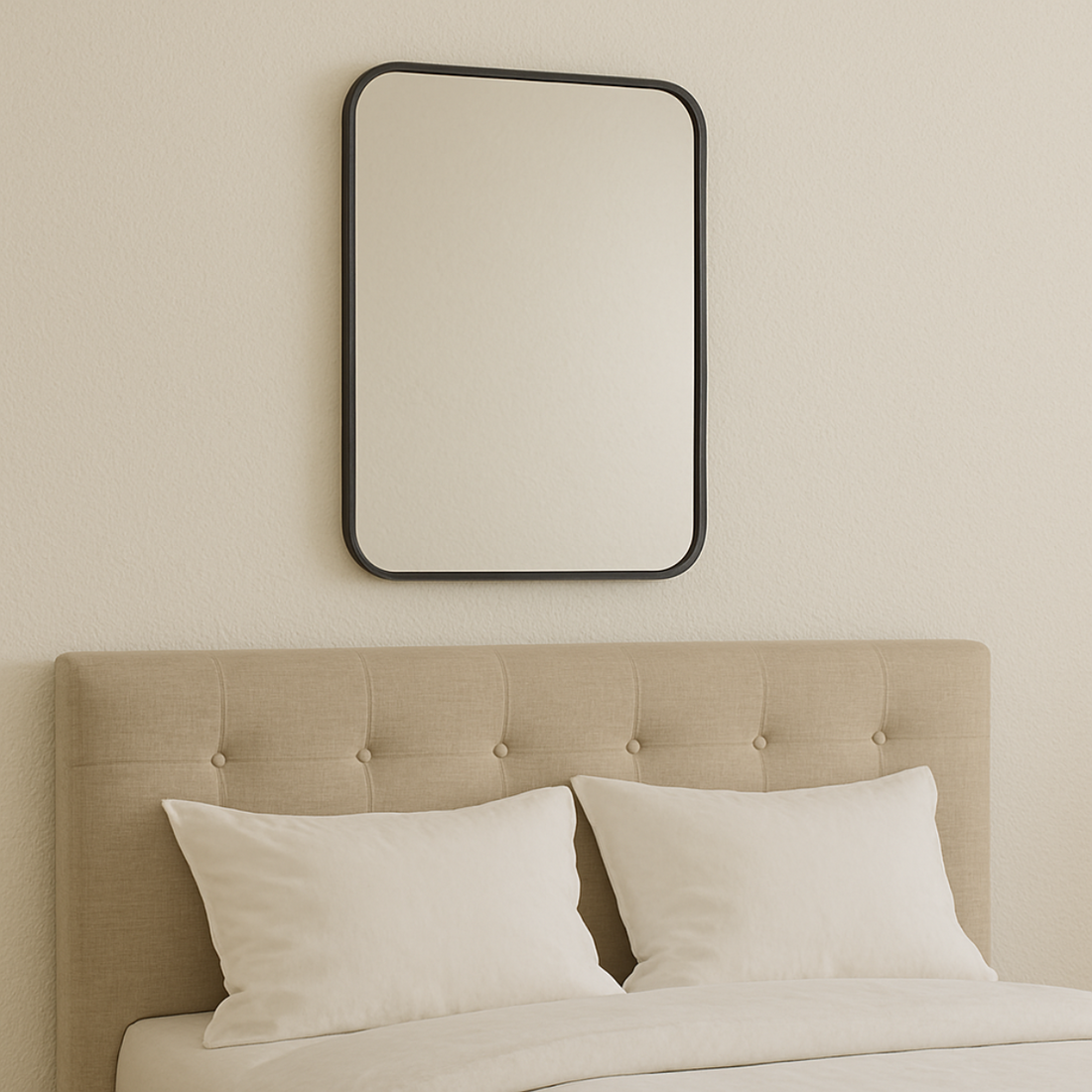
How to Choose a Wall Mirror | Room-by-Room Styling Tips
Share
A well-chosen mirror does more than reflect your image — it reflects your home’s personality. From enlarging small spaces to brightening dim rooms, understanding how to choose a wall mirror is essential for creating a balanced and beautiful home environment.
Essentials to Guide Your Selection
Define the Purpose
Is the mirror for practical use (e.g., a bedroom dressing mirror) or purely decorative? Clarifying its function helps you select the right size, shape, and placement.
Match the Style to the Room
Mirrors should complement your existing decor. Minimalist rooms suit frameless or thin-framed mirrors, while ornate frames match traditional spaces.
Choose the Right Shape
Different shapes create different effects. Rounded mirrors soften a space, while rectangles create structure and formality.
Wall Mirror Size Guide: Getting Proportions Right
Small Mirrors
Perfect for narrow spaces like hallways or small powder rooms. They work best when grouped with artwork or layered decor.
Medium Mirrors
Ideal for over consoles, sideboards, or fireplace mantels — covering about two-thirds the width of the furniture piece.
Full-Length Mirrors
At least 48 inches tall, full-length mirrors are ideal for bedrooms, dressing areas, and walk-in closets.
Mirror Placement Tips: Maximizing Light and Space
Strategic Locations for Best Results
Opposite Windows
Positioning a mirror across from a window reflects natural light and visually enlarges the room.
Entryways
Placing a mirror in your entryway creates an inviting, spacious feel as soon as you walk in.
Above Furniture
Hang mirrors above dressers, consoles, or sofas for a cohesive and stylish setup.
Choosing Mirrors for Living Rooms
Oversized Statement Mirrors
Large mirrors make a bold impact, especially when leaned against a wall or placed above a fireplace.
Mirror Walls
A gallery of smaller mirrors can mimic the effect of a window or become an artistic centerpiece.
Symmetry and Balance
Use pairs of mirrors to flank sofas, mantels, or large art pieces for a polished, balanced look.
Choosing Mirrors for Bedrooms
Functional Dressing Mirrors
Install full-length mirrors for getting ready. If space is limited, over-the-door mirrors work well.
Bedside Mirrors
Hang small decorative mirrors above nightstands to add symmetry and visual interest.
Feng Shui Tips
Avoid placing mirrors directly facing the bed to promote restful sleep according to feng shui principles.
Practical Shopping Tips for Finding the Perfect Wall Mirror
Prioritize Quality Materials
Look for thick, well-backed glass to ensure a high-quality reflection that resists distortion.
Pay Attention to Mounting Hardware
Ensure that the mirror includes strong, safe mounting materials suitable for your wall type (drywall, brick, etc.).
Consider Customization
If standard sizes don’t fit your space, many brands, including Camden Isle, offer customizable mirrors to fit unique needs.
Conclusion
Choosing the right mirror is an opportunity to enhance your home’s light, depth, and beauty. By understanding how to choose a wall mirror, considering shape, size, and placement carefully, you can turn any room into a stunning reflection of your personal style.
-
Focus on size, purpose, and shape.
-
Maximize light with strategic placement.
- Harmonize mirrors with room décor for best results.
FAQs About Your Wall Mirror Questions Answered
Should a wall mirror be centered on a wall or above furniture?
Above furniture like consoles or sofas, center the mirror relative to the furniture, not the wall itself.
How high should you hang a mirror?
The mirror's center should ideally be at eye level, around 57–65 inches from the floor, depending on the space.
Are round mirrors better than square mirrors?
Round mirrors soften hard lines and work well in contemporary or eclectic spaces; square or rectangular mirrors provide formality and structure.


